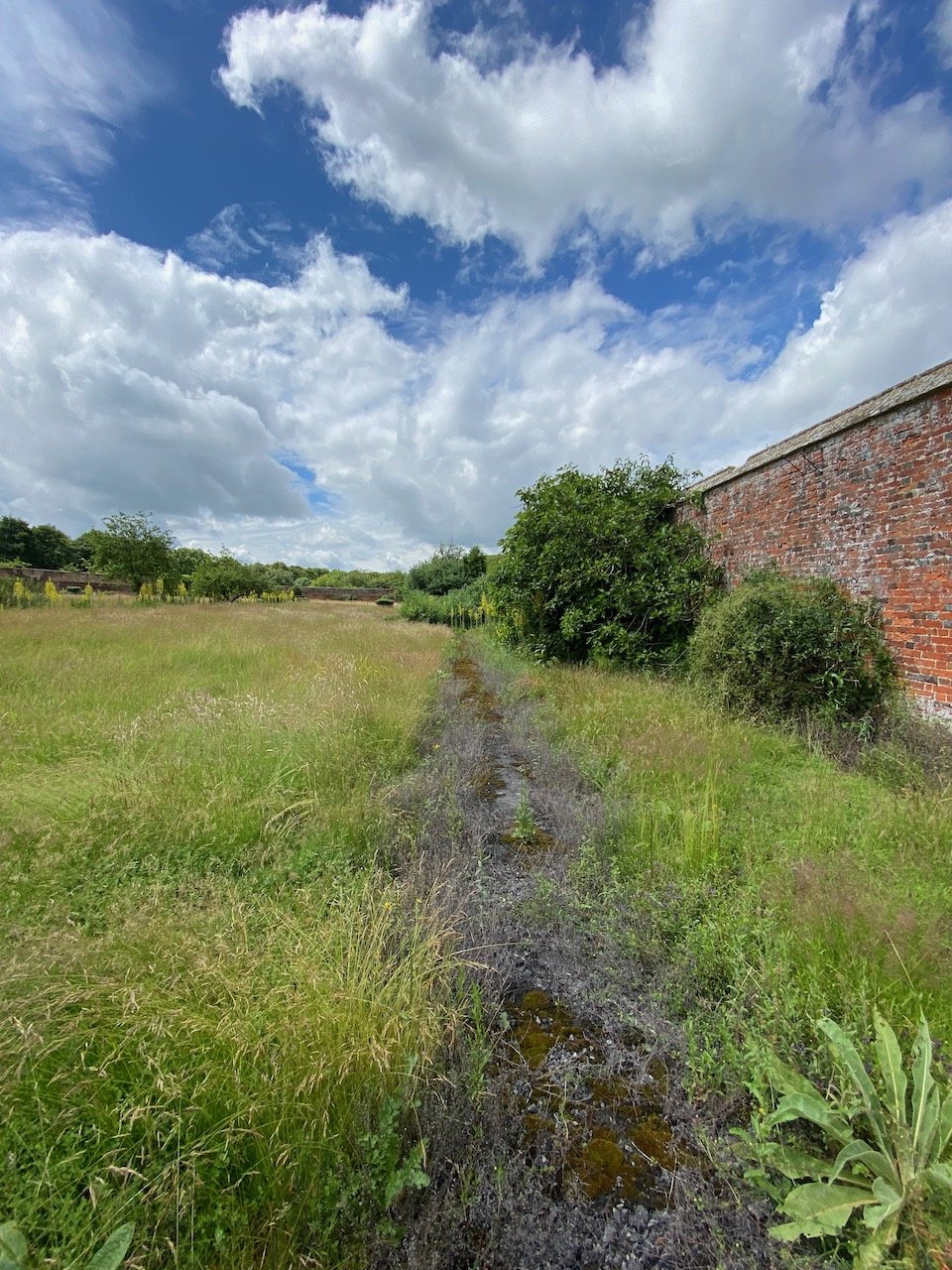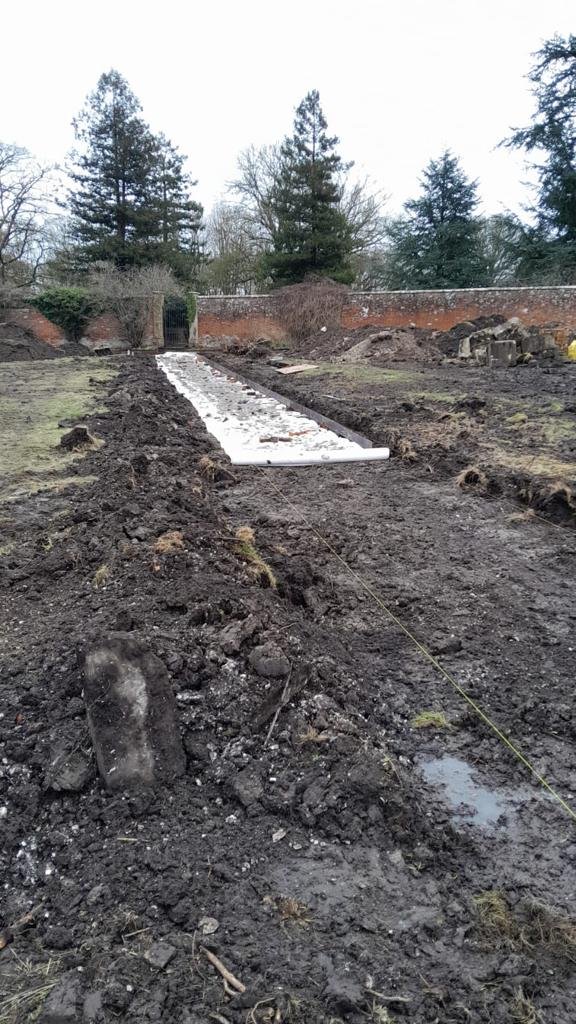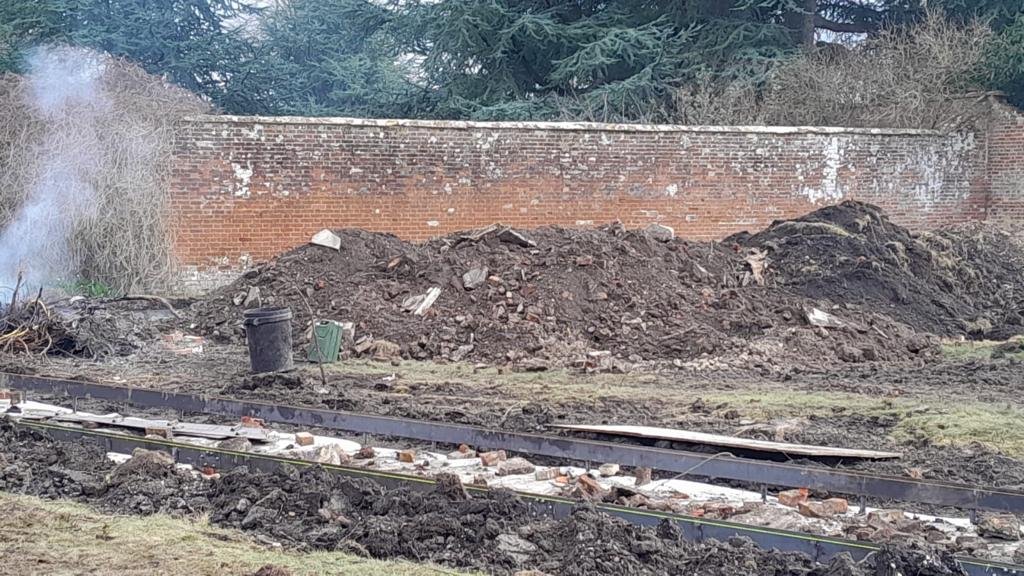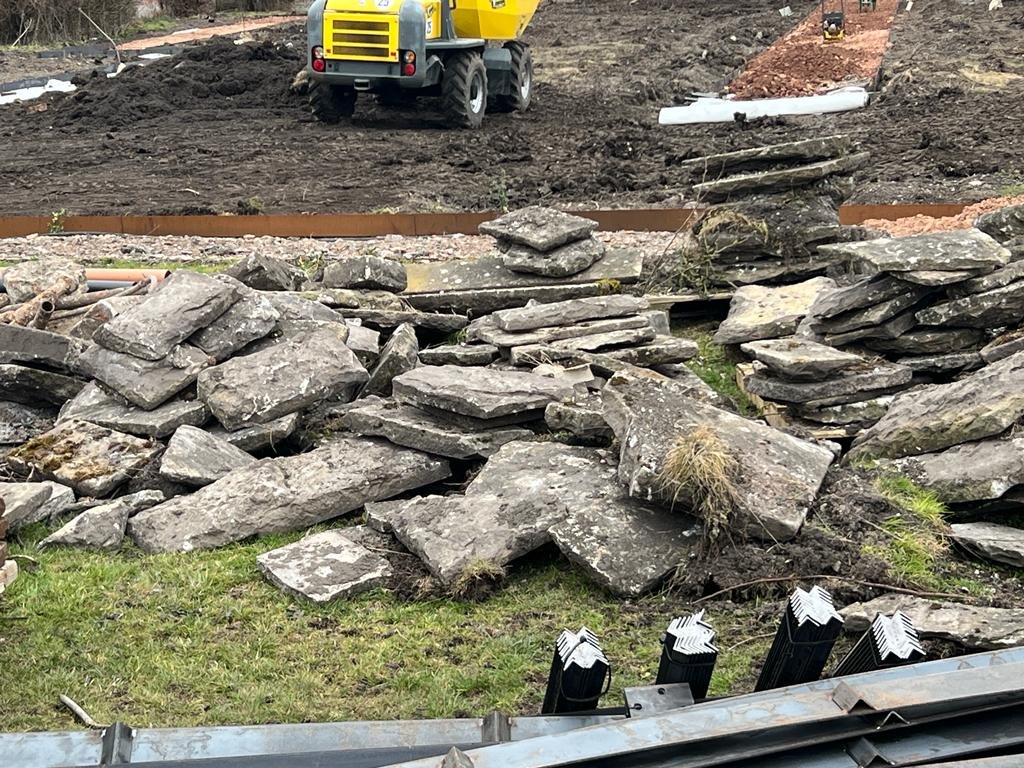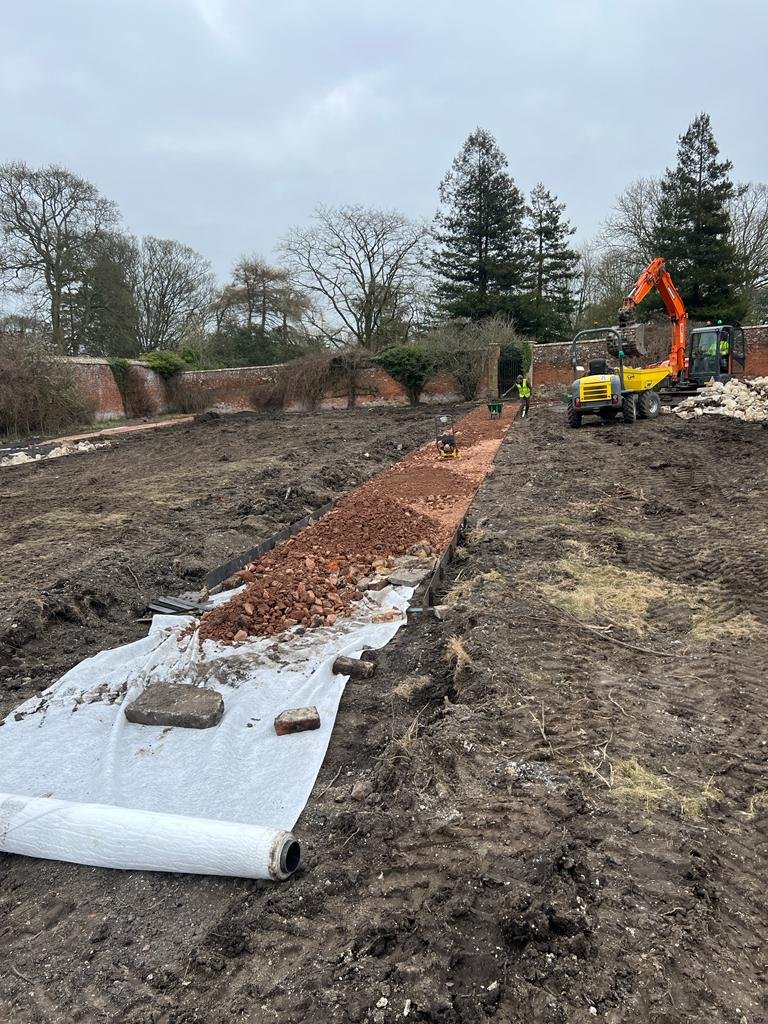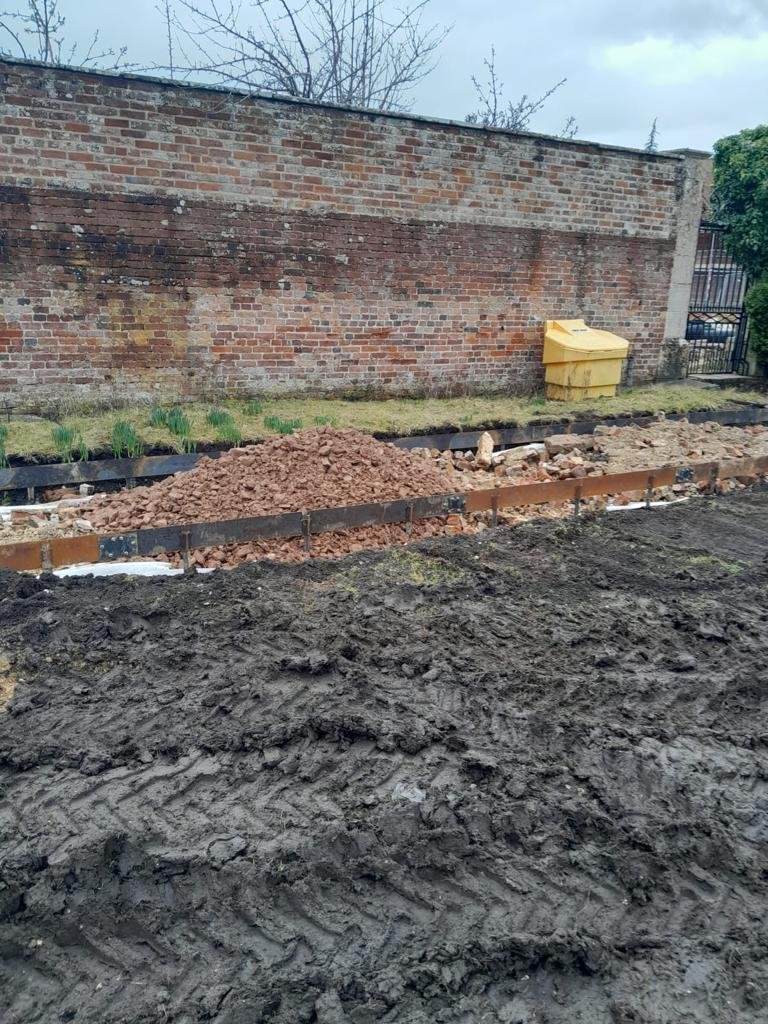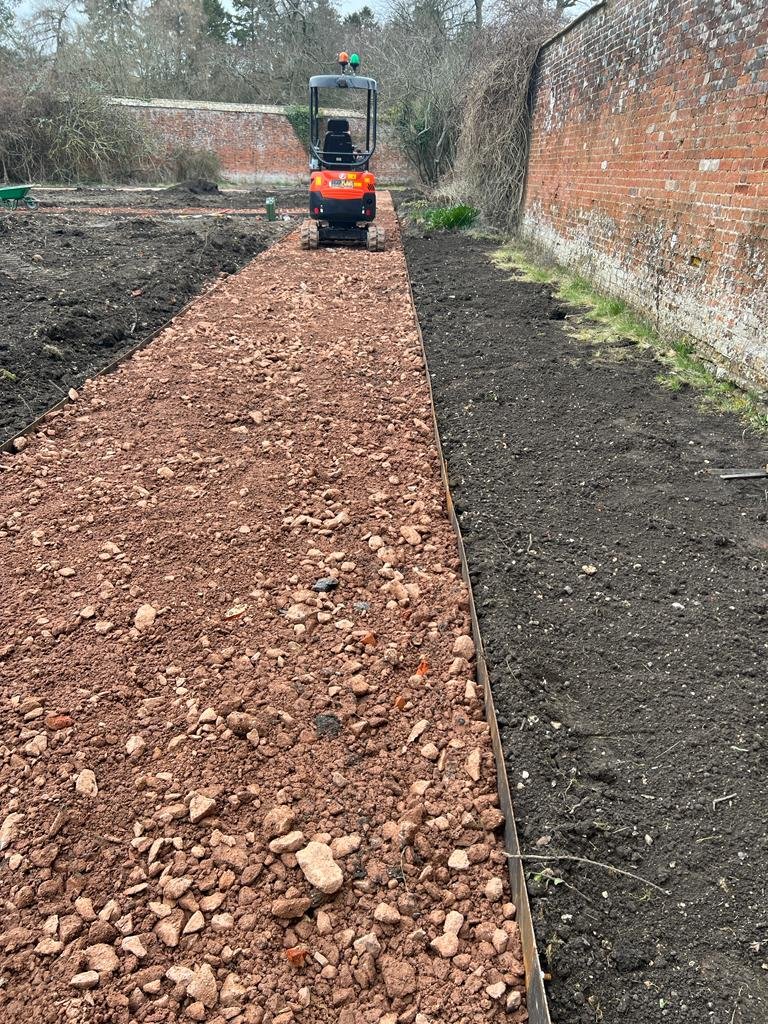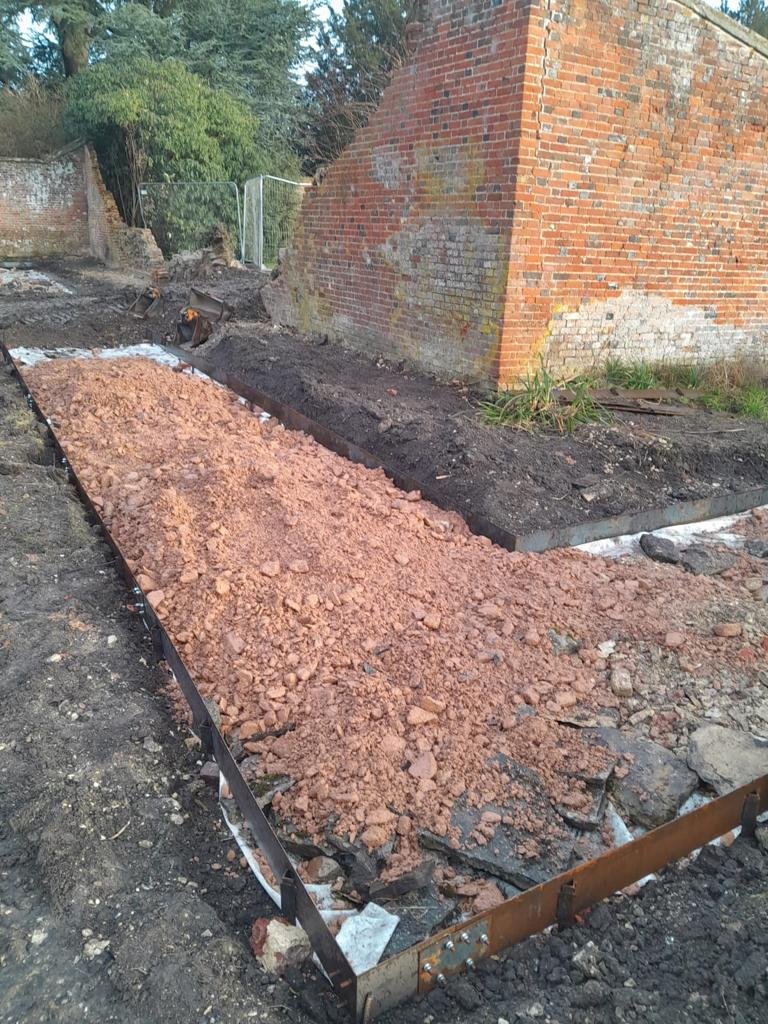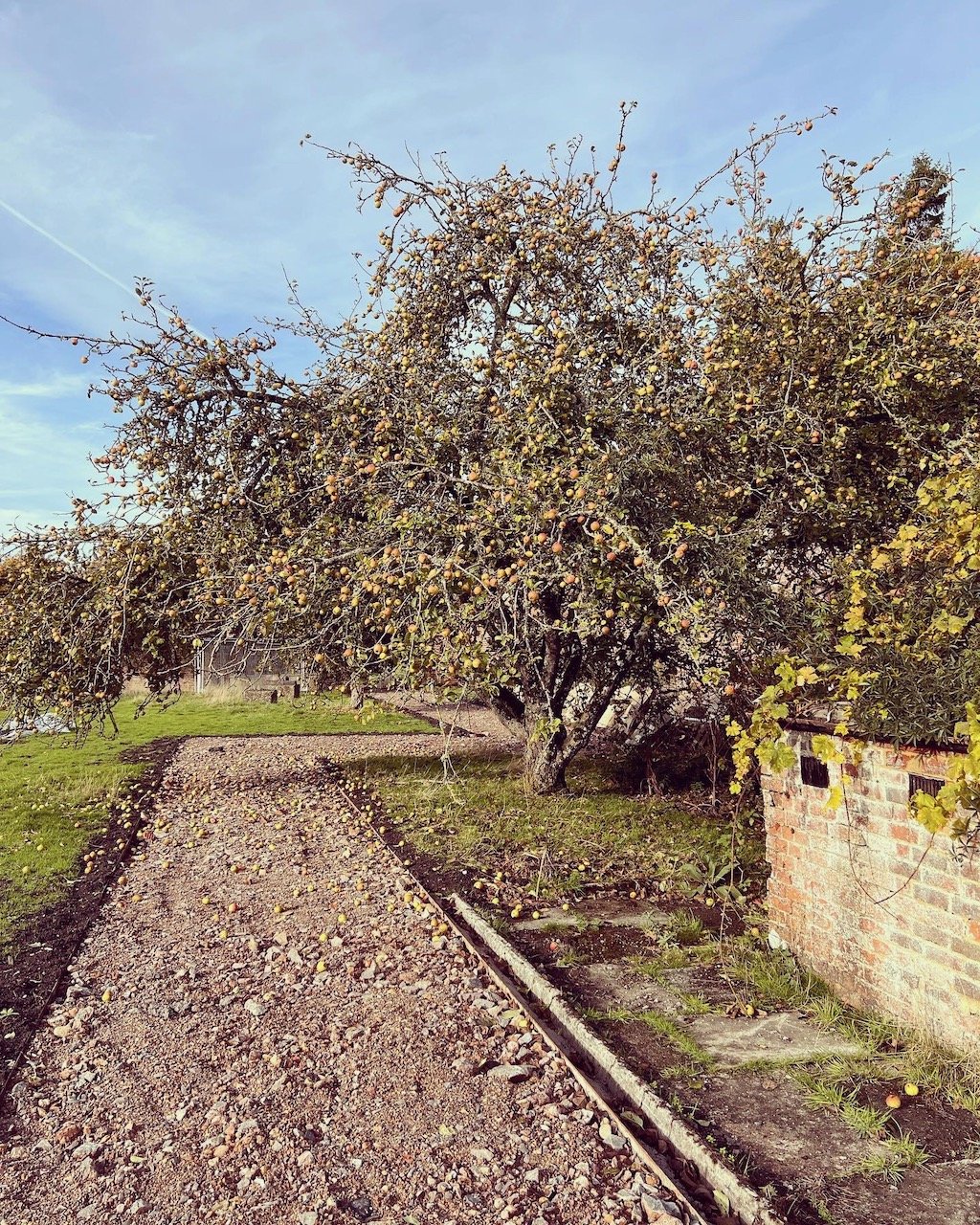Starting the Paths
Path to East Gate July 2021
We eagerly awaited news of the planning permission for our walled garden project, which we obviously didn’t received by the beginning of June 2022. We decided to delve deep into historical references and meticulously researched the paths that once created the main structure in our garden.
During the 1700s, walled garden paths were an essential feature of grand estates and kitchen gardens. These paths served practical and aesthetic purposes, providing access to different garden sections while adding structure and elegance to the overall design. While specific details about walled garden paths from that era may vary depending on the region and the preferences of the garden's owners, some general characteristics and considerations can be observed.
We aimed to stay true to the garden's historical context and revive the essence of the past. Drawing inspiration from old maps of the walled garden and insightful books on Wiltshire kitchen gardens, we set out to recreate the pathways that guided footsteps centuries ago. One particular map from 1873-1888 revealed a network of paths that became the focal point of our restoration efforts during the summer of 2022.
The paths within a walled garden were often meticulously laid out, dividing the open ground into neat squares or rectangles. These geometric divisions created a sense of order and allowed for efficient cultivation and maintenance of the garden. Borders, located beneath the walls, were often wider, providing additional space for planting and embellishment with ornamental elements, such as low-growing flowers or shrubs.
Regarding the overall design of the paths, symmetry and balance were highly valued during this period. The paths were carefully integrated into the overall layout of the garden, with precise measurements and proportions considered to create a harmonious and visually pleasing environment. The paths followed straight lines and gentle curves, gracefully guiding visitors through the garden's different sections and enticing exploration and discovery.
In Toby Musgrave's captivating book, "The Head Gardeners: Forgotten Heroes of Horticulture," we discovered intriguing insights into the evolution of kitchen gardens during the mid-1700s. It was a time when George IV, the Prince Regent, displayed a keen interest in exquisite cuisine, leading to the cultivation of more exotic crops and a demand for a wider variety of produce. As a result, kitchen gardens expanded in size, corresponding to the household scale they served. Gardens of 12 acres were found at the upper end of the spectrum, while smaller gardens could be more modest in scale.
Around the time our walled garden was constructed, Henry Stevenson, in the second edition of "The Gentleman Gardener," provided invaluable guidance on the ideal dimensions for a kitchen garden. He recommended "an enclosed space encompassing half an acre or 80 perches for a family of seven or eight. The walls, standing at a height of 11 to 12 feet, enclosed the garden, with borders beneath the tree-planted walls measuring 8 to 9 feet in width. The open ground was divided into squares or rectangles, carefully separated by paths of sand, chosen for its practicality over gravel, which tended to become dirty when traversed by wheelbarrows. Jean Baptiste de La Quitinie, a French author, later advocated for quarter dimensions ranging from 90 to 120 feet by 40 to 45 feet, with main walks measuring a minimum of 6 to 7 feet in width and service paths narrower at 2 feet."
Taking these historical recommendations into account, along with the evidence of where the old paths were, we carefully considered our walled garden paths. We opted for paths that are 6 feet wide, creating two smaller rectangles at the east end measuring approximately 130 feet by 50 feet and a larger rectangle at the west end, spanning 135 feet by 95 feet. To maintain the authenticity of the space, we meticulously restored the paths that traced the entire length of the wall, located approximately 7 feet away from its majestic boundary.
The choice of materials for these paths also played a crucial role. In some instances, paths were made of sand rather than gravel, as sand was less likely to become soiled or muddy when subjected to heavy use. The decision to use sand also aligned with practical considerations, as it provided a softer surface for wheelbarrows and other garden implements to traverse, minimizing noise and potential damage. For our paths, we decided to reuse as much existing stone and brick as possible from the site that wouldn't be used elsewhere. We strive to reuse what we can whenever possible.








